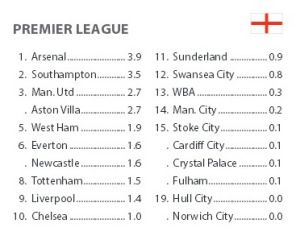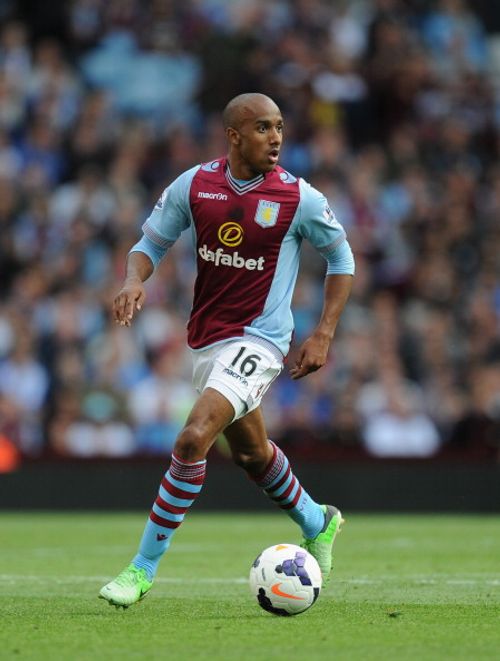
Aston Villa a leader in homegrown Premiership talent, but is more aggressive ambition needed?

Most Aston Villa supporters will be well aware by now that our football academy ranks as one of the best in Europe. As well as our youth team being European Champions last season by winning the Next Gen Series, the stats back it up. As we reported at the end of last year, Villa ranked as the third best English team for supplying top players to the top five European leagues.
The above table compiled by the Football Observatory with data by Opta Pro, shows Villa to be third again (joint with Manchester United) in terms of fielding players in their team that they have actually brought up through the ranks – footballers who have played at least three years between the ages of 15 and 21 and play in their first team.
Noticeably, two teams in the two spots above Villa, Arsenal and Southampton also occupy spots in the current top three in the Premier League ( 12th November 2013), while the team joint third with them, Manchester United are the reigning champions.
Obviously, the utilisation of homegrown players is a good proven foundation for success, but the difference between these clubs and Villa, seems to be the quality of players then added to this foundation.
Paul Lambert has tended to buy European imports that are actually at the same level and age group as the homegrown players that he inherited through Villa’s academy. Of course, Arsenal and Manchester United have Champions League money to spend on players to maintain their standing, but recently promoted Southampton perhaps have been more canny in fast-tracking success than Villa.
While Lambert seeks value for money bargains, the Saints have added players of the same age group but of a more proven quality at the £8-12 million mark. Defensive midfielder Victor Wanyama (22) was £12.7 million from Celtic, while centre-back Dejan Lovren (24) was £8.8 million from Lyon.

Fabian Delph
Both players have contributed to Southampton possessing the best defence in the Premier League. With just five goals shipped in 11 games, that’s at least half the total of any other club bar Everton (6). It suggests that shelling out that bit extra pays dividends.
The season before, when they were newly promoted, Southampton brought in five players in Lambert’s favourite demographic – aged between 21 to 24 and costing £2-4 million, in a move that mirrored Lambert’s own re-building program. The Saints also acquired the services of attacking midfielder Gastón Ramírez (21) from Bologna for £13.3 million and newly promoted England international striker Jay Rodriguez (22) from Burnley for £7.6 million to suggest they had ambitions to do more than just stay up in the league, as their signings this summer also suggest.
It’s clear so far that Lambert’s £6 million punt on Benteke was a better piece of business than the Saint’s purchase of Pablo Osvaldo (26) for 13.25 million from Roma, but overall, it shows while the Saints through Nigel Adkins and now Mauricio Pochettino have a similar transfer ethos to Lambert’s ‘young and hungry’ , they seem to have more fast-tracked ambition.
Is Lambert being too conservative? After all, with no disrespect to Southampton, surely Aston Villa would be able to attract almost any player before the south coast team could?
Of course, it’s early days in the season. Every season notably has a fast starter that drops down the league like a stone. Likewise, you’d expect Villa to get stronger as the season goes on, having also navigated a tough set of opening fixtures.
I guess the moral of this story is, with the great youthful home-grown infrastructure at Villa Park and with Benteke still in our ranks, lets supplement these players with ambitious intent. As Southampton have shown, it’s a balance and philosophy that can certainly make inroads into the status quo of top teams.